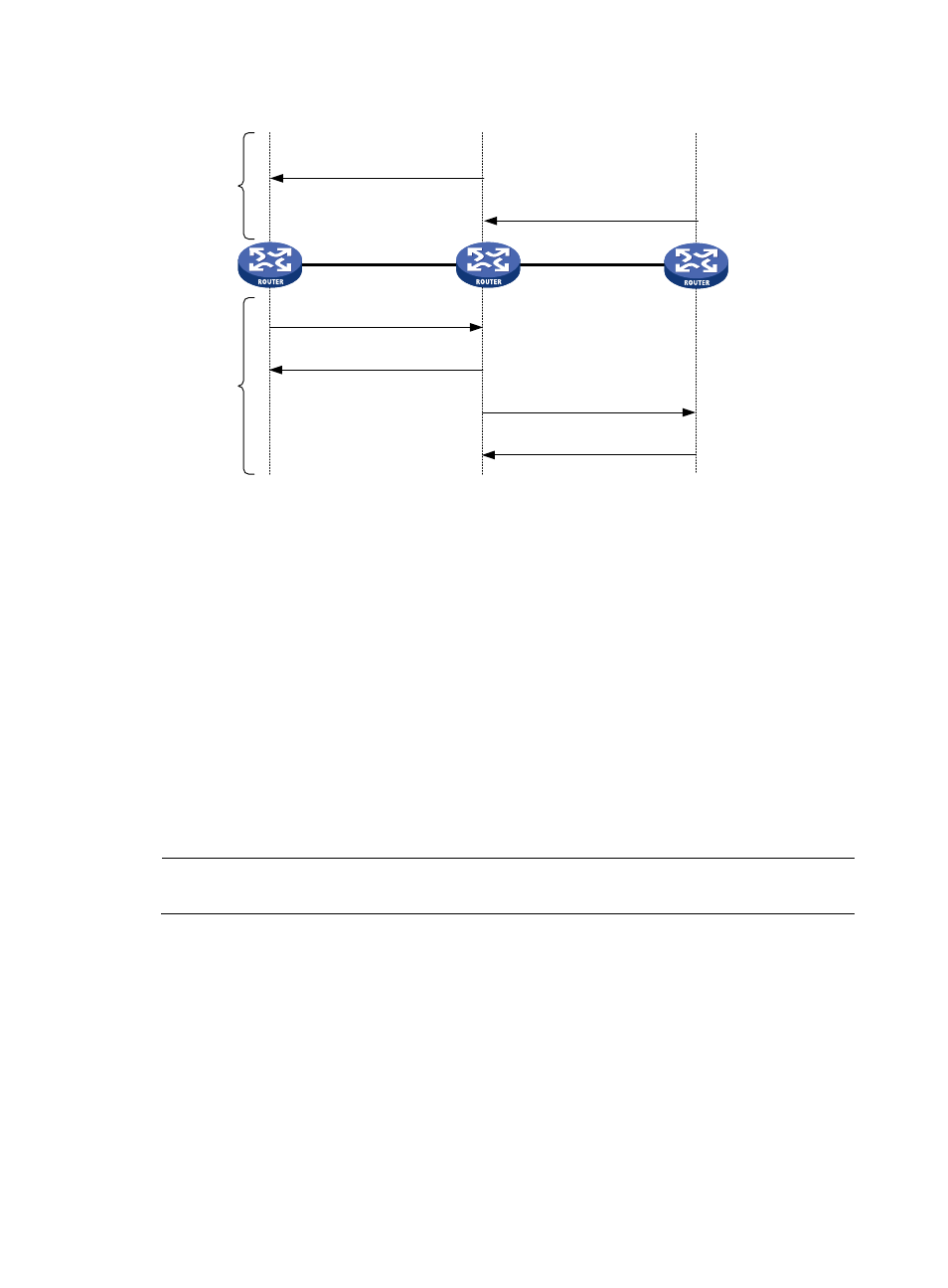Mpls forwarding, Lfib – H3C Technologies H3C SR8800 User Manual
Page 17

6
Figure 6 Independent label distribution control mode
In ordered mode, an LSR distributes its label binding for a FEC upstream only when it receives
a label binding for the FEC from its downstream or it is the egress of the FEC. In
, label
distribution control is in ordered mode. In this case, if the label advertisement mode is DU, an
LSR will distribute a label upstream only when it receives a label binding for the FEC from its
downstream; if the label advertisement mode is DoD, after an LSR (Transit in this example)
receives a label request from its upstream (Ingress), the LSR (Transit) sends a label request to its
downstream (Egress). Then, after the LSR (Transit) receives the label binding from its
downstream (Egress), it distributes a label binding to the upstream (Ingress).
3.
Label retention modes
Two label retention modes are available: liberal and conservative.
In liberal mode, an LSR keeps any received label binding regardless of whether the binding is
from its next hop for the FEC or not. This allows for quicker adaptation to route changes but will
waste label resources as LSRs need to keep extra labels.
In conservative mode, an LSR keeps only label bindings that are from its next hops for the FECs.
This allows LSRs to maintain fewer labels but makes LSRs slower in adapting to route changes.
NOTE:
The router supports only the liberal mode.
MPLS forwarding
LFIB
An LFIB comprises the following parts:
•
Next Hop Label Forwarding Entry (NHLFE)—Describes the label operation to be performed. It is
used when forwarding MPLS packets.
•
FEC to NHLFE (FTN) map—FTN maps each FEC to a set of NHLFEs at the ingress LSR. The FTN map
is used for forwarding unlabeled packets that need MPLS forwarding. When an LSR receives an
unlabeled packet, it looks for the corresponding FIB entry. If the Token value of the FIB entry is not
Invalid, the packet needs to be forwarded through MPLS. The LSR will then look for the
Egress
Transit
DU mode
DoD mode
Ingress
2) Distribute a label to the
upstream unsolicitedly
1) Distribute a label to the
upstream unsolicitedly
1) Request the downstream to
assign a label
3) Request the downstream to
assign a label
2) Assign and distribute a
label to the upstream upon
receiving the request
4) Assign and distribute a
label to the upstream upon
receiving the request
